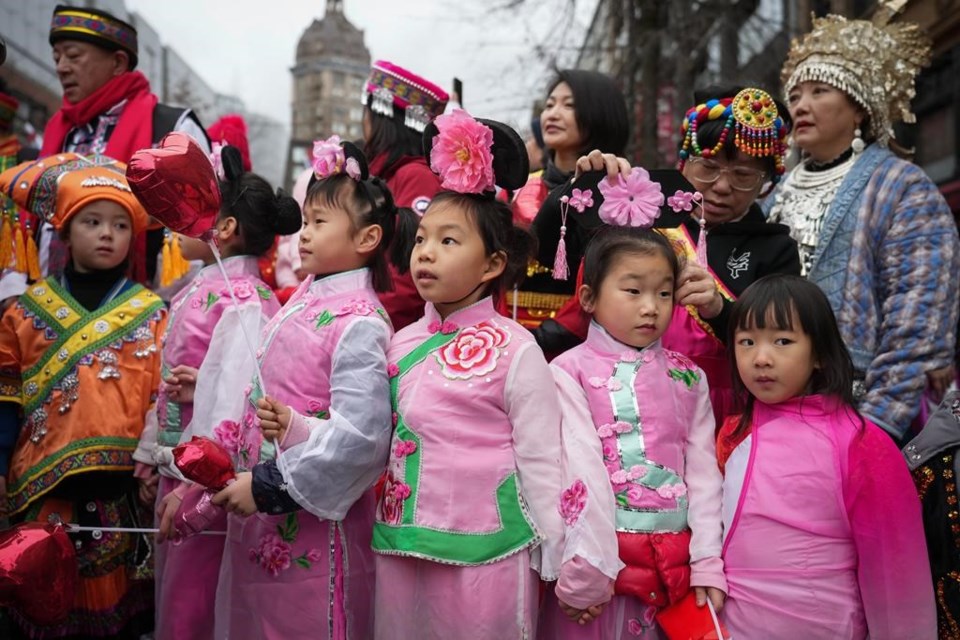Canadians across the country and people around the world kicked off the first day of Lunar New Year celebrations Sunday and welcomed the arrival of the Year of the Rabbit.
Here are five things to know about the annual tradition widely celebrated in Asian countries and expatriate communities around the world::
What is the Lunar New Year?
The Lunar New Year is the most important annual holiday in China and is also celebrated in other countries such as Vietnam, Korea, Singapore and Malaysia. Some traditions are shared among these nations and their descendants, but celebrations are largely unique to each country's cultural identity.
The Lunar New Year marks the start of the lunar calendar, which is based on the cycles of the moon and falls on a different day each year depending on the moon cycle.
This Lunar new Year begins Jan. 22 and spans over 15 days from the first new moon of the lunar calendar and ending on the first full moon.
Why is it the Year of the Rabbit?
The Year of the Tiger has now come to a close as the lunar calendar moves on to its fourth year in the Chinese zodiac cycle -- the Year of the Rabbit.
Each year is named after one of the 12 signs of the Chinese zodiac in a repeating cycle. The Chinese zodiac is made up of 12 animals, starting with the rat and running through the ox, tiger, rabbit, dragon, snake, horse, goat, monkey, rooster, dog and pig. The zodiac is seen as crucial to understanding people and their health, wealth and love.
Those born in the Year of the Rabbit -- including 2023, 2011, 1999, 1987 and every 12-year cycle before that -- are associated with qualities like calm, empathy, patience and ingenuity. According to Chinese culture, the Year of the Rabbit symbolizes longevity, peace and prosperity, and the new year is predicted to be one of hope.
While communities across Asia are welcoming the Year of the Rabbit, the Vietnamese are instead celebrating the Year of the Cat. There's no official answer to explain the difference, but one theory suggests cats are popular because they often help Vietnamese rice farmers to chase away rats.
How is the festival celebrated?
For the past three years, Lunar New Year celebrations were muted in the shadow of the COVID-19 pandemic. Many celebrate the first day of the Lunar New Year at home with family, but parades and other public celebrations are popular options this year.
Some communities are celebrating through events including street festivals, performances, zodiac fortune telling, mahjong competitions and more.
Specific festivities can vary among different cultures but the holiday is largely associated with spending time with family. Many Chinese families will gather to make large traditional dinners, while shopping and light fireworks are also traditions for some.
What are lion dances?
Lion dances are a form of traditional dance in China and other Asian countries — often performed at Lunar New Year celebrations — in which performers in a lion costume mimic the animal's movements. They are often performed to large crowds outside shopping malls and businesses and are thought to bring good luck, according to Chinese tradition.
The dances date back thousands of years and are usually performed in colourful costumes, with a front dancer controlling a giant lion mask while another at the back controls the body and legs. The performances often feature loud drums and cymbals.
What about red packets?
Another popular Lunar New Year tradition is when parents, married couples and older family members hand out red envelopes containing crisp money and treats to unmarried youth and younger children. The act is thought to help get rid of bad spirits and wish the youth good fortune for the upcoming year.
The envelopes are red because the colour brings prosperity in Chinese culture, while money symbolizes the hope for wealth and abundance. Throughout the festive season many will also wear red or hang up red-and-gold decorations, which also signify good fortune and prosperity.
Sources: University of Ottawa, University of Waterloo, Columbia University and Case Western Reserve University
This report by The Canadian Press was first published Jan. 22, 2023.
—�Ĕ�Ĕ
This story was produced with the financial assistance of the Meta and Canadian Press News Fellowship.
Tyler Griffin, The Canadian Press



